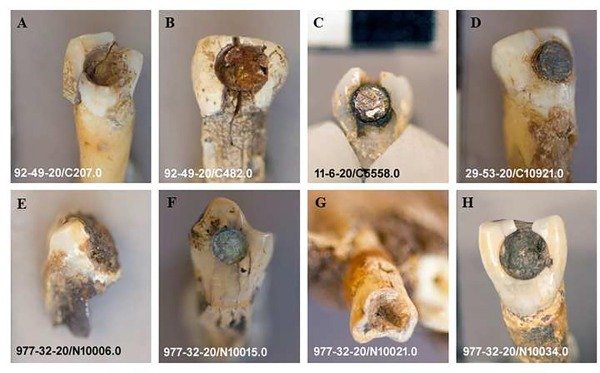Maya tooth jewelry made of jade, gold and other precious metals and stones, probably not only gave “gloss” to their owners, but also served as a prevention of caries and periodontal disease. This property was possessed by cement, which was attached to the teeth of all this beauty, scientists from Mexico and the United States said.
Researchers of the Mayan culture know that the ancient representatives of this people were very fond of giving their smile additional beauty, namely, they grinded their teeth or drilled cavities in them to insert “fillings” of jade, gold, turquoise, jet or hematite. This was also done for ritual purposes: fillings were glued to incisors and canines in early adulthood, they remained with a person for life and probably had spiritual significance.
All this splendor was attached to the teeth with the help of special cement. Its nature was studied by scientists from the Autonomous University of Yucatan (Mexico), as well as Harvard and Brown Universities (USA). They presented their findings in the journal Archaeological Science: Reports. Jeweled teeth have been taken from archaeological sites in Guatemala, Belize and Honduras.
In the study, the scientists identified 150 organic molecules that are commonly found in plant resins. Depending on the place of origin of the tooth, the cement, as it turned out, had a slightly different set of substances, but the main ingredients were the same.
Their mixture was extremely strong. It is understandable, because the teeth encrusted with jewels have survived to this day. Scientists also found out that such blotches on teeth were made not only by rich people, but also by representatives of not very successful classes. And both men and women.
But the main conclusion of the authors of the work concerns the therapeutic properties of cement. It turned out that he had a healing and hygienic effect. The adhesive mixture, according to the researchers, was able to reduce the risk of inflammation and infections in the mouth, since one of its main ingredients was pine resin, which has antibacterial properties.
Two of the eight fillings were sealed with a mixture containing sclareolide, a natural product derived from a variety of plant sources, including sage and tobacco. This substance has both antibacterial and antifungal effects. In addition, it smells good, so it is often used in perfumery. In addition, scientists have found in the cement essential oils of plants of the mint family, which also have an anti-inflammatory effect.
The drilling was done so skillfully that it rarely affected the nerve pulp and blood vessels in the center of the tooth. By the way, archaeologists know that the Mayans were reverent about dental hygiene, so the conclusions of scientists look quite plausible: the cement mixture could serve not only to fix precious metals and stones, but also to prevent caries and periodontal disease.











